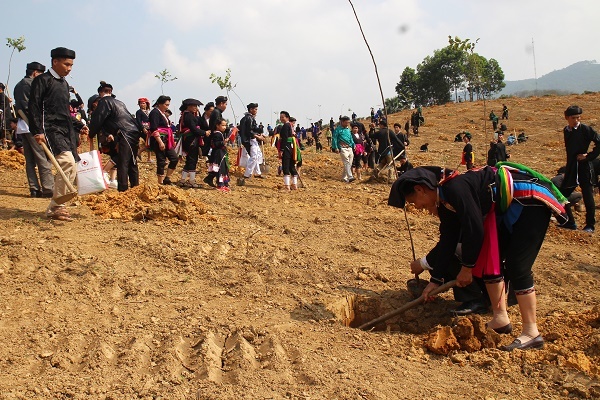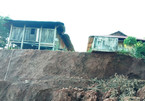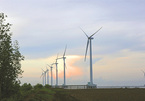Each province, from Hoa Binh to Son La, Dien Bien, Lai Chau, Lao Cai and Yen Bai, has its own solutions to adapt to climate change and protect the environment. However, all of them are doing the same thing – re-programming the development of three kinds of forests, protective forests, production forests and special-use forests to green hollow land and bare hills.

Forests play an important role in balancing the ecosystem, creating fertility for surface soil, preventing landslides, and providing abundant water resources. Scientists say forests can help mitigate the consequences caused by all natural disasters and extreme weather phenomena such as drought, water shortage and floods.
In northwestern provinces, the programming of three types of forests alone is meeting fifficulties. If the forestland increases, agriculture land and maize and cassava growing areas will decrease, threatening food security.
In the provinces of Son La and Hoa Binh, the fruit growing area has been increasing rapidly. If the agricultural land area increases, the forestland area will decrease.
|
In northwestern provinces, the programming of three types of forests alone is meeting fifficulties. If the forestland increases, agriculture land and maize and cassava growing areas will decrease, threatening food security. |
One of the tasks the Lao Cai provincial authorities set when projecting solutions to adapt to climate change is increasing the forest cover rate to 54.82 percent in 2018, higher than the average rate of 44.5 percent in the entire northwestern region. In 2012, the local authorities closed the forests and restricted the use of forestland for other purposes.
According to director of the Lao Cai agriculture department, Nguyen Anh Tuan, 70 percent of planted forest in the province are large wooded forests. In some areas with favorable conditions, Lao Cai people conduct silvicultural measures to convert rich forests, and grow additional native plants, multi-purpose trees and medicinal plants under the forest canopy.
Yen Bai is one of the provinces with the highest forest cover rate in the northwestern region, 63 percent, ranked fourth in Vietnam, after Bac Kan, Quang Binh and Tuyen Quang. It has 464,151 hectares of forests, of which natural forests account for 60 percent.
Yen Bai has a large forest coverage. Unlike Hoa Binh, Dien Bien, Lai Chau and Son La which have had difficulties in forest development, the planting of forests in Yen Bai has been going smoothly. However, production forests in Yen Bai account for nearly 50 percent of total forest area.
Thanh Lich

Climate change in the northwest: living in flooded areas
Locals in the northwestern area do not know how to ‘live together with floods’ as people in the coastal central areas do.

Mekong Delta to be urged to apply technologies to adapt to climate changes
The Fourth Industrial Revolution has created many technological achievements to help people conquer nature, Prime Minister Nguyen Xuan Phuc said yesterday.
 Northwestern provinces are aware of the possible consequences of climate change and understand that protecting the environment is urgently needed.
Northwestern provinces are aware of the possible consequences of climate change and understand that protecting the environment is urgently needed.